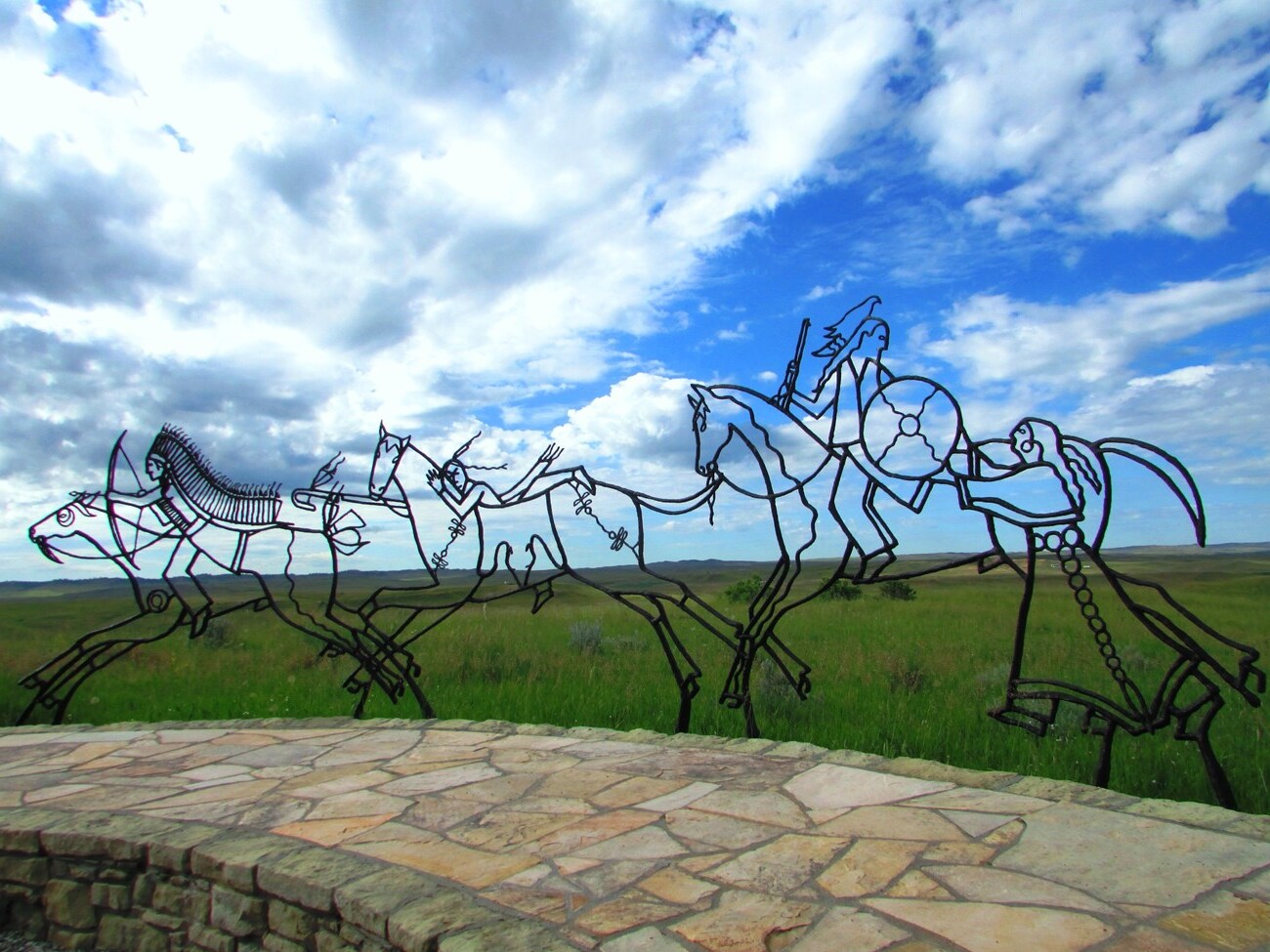Uncover History At Little Bighorn’s Indian Memorial

Have you ever wondered about the stories behind the Indian Memorial at Little Bighorn? This site honors the Native American warriors who fought bravely during the Battle of the Little Bighorn in 1876. Visiting this memorial offers a chance to learn about the rich history and culture of the tribes involved, including the Lakota, Cheyenne, and Arapaho. The memorial stands as a powerful reminder of their courage and resilience. Walking through the site, you can feel the spirit of those who defended their way of life. It's a place where history comes alive, offering a deeper understanding of a pivotal moment in American history.
Uncover History at Little Bighorn's Indian Memorial
Little Bighorn Battlefield National Monument in Montana holds a deep historical significance. The Indian Memorial, dedicated to the Native American warriors who fought in the Battle of Little Bighorn, offers a profound glimpse into their bravery and culture. Here are some must-see spots within the memorial.
Sacred Circle
The Sacred Circle stands as a powerful tribute to the Native American tribes involved in the battle. This circular structure symbolizes unity and remembrance.
- Spirit Gate: This entrance to the Sacred Circle represents the passage between the physical world and the spiritual realm. It’s adorned with intricate designs and symbols.
- Warrior Markers: These markers honor the individual warriors who fought and died in the battle. Each marker tells a story of courage and sacrifice.
- Prayer Flags: Colorful flags flutter in the wind, carrying prayers and blessings. They add a serene and reflective atmosphere to the memorial.
Story Wall
The Story Wall provides a detailed narrative of the Battle of Little Bighorn from the Native American perspective. It’s an educational and moving experience.
- Historical Panels: These panels offer a chronological account of the events leading up to, during, and after the battle. They include quotes and testimonies from Native American leaders.
- Artwork and Murals: Beautifully crafted murals depict scenes from the battle and daily life of the tribes. The artwork brings history to life.
- Interactive Displays: Touchscreens and interactive maps allow visitors to explore the battlefield and learn about key moments and figures.
Peace Through Unity
This section of the memorial emphasizes reconciliation and the hope for a peaceful future. It’s a place for reflection and understanding.
- Reconciliation Sculpture: A striking sculpture that symbolizes the coming together of different cultures. It’s a powerful reminder of the importance of unity.
- Peace Garden: A tranquil garden filled with native plants and flowers. It’s a perfect spot for contemplation and remembrance.
- Message Stones: Stones inscribed with messages of peace and hope. Visitors are encouraged to leave their own messages, adding to the collective voice for unity.
Honoring the Tribes
The Indian Memorial pays tribute to the various tribes that participated in the battle. Each tribe’s unique contributions and sacrifices are recognized.
- Tribal Plaques: Plaques dedicated to each tribe involved in the battle. They provide information about the tribe’s history and role in the conflict.
- Cultural Exhibits: Exhibits showcasing traditional clothing, tools, and artifacts from the tribes. These displays offer insight into the rich cultural heritage of the Native American people.
- Oral Histories: Recordings of stories and memories from tribal elders. Listening to these oral histories provides a personal connection to the past.
Educational Programs
The memorial also offers various educational programs and activities for visitors of all ages. These programs aim to deepen understanding and appreciation of Native American history and culture.
- Guided Tours: Knowledgeable guides lead tours around the memorial, providing in-depth information and answering questions.
- Workshops and Lectures: Regular workshops and lectures on topics related to the Battle of Little Bighorn and Native American culture. These sessions are both informative and engaging.
- Children’s Activities: Special activities designed for younger visitors, including storytelling sessions, craft projects, and interactive games. These activities make learning about history fun and accessible for kids.
Reflecting on Little Bighorn's Indian Memorial
Little Bighorn's Indian Memorial offers a powerful glimpse into a pivotal moment in history. Visiting this site, you can feel the weight of the past and understand the struggles and bravery of the Native American warriors. The memorial stands as a tribute to their courage and resilience, ensuring their stories are not forgotten.
Exploring the memorial, you’ll find detailed plaques, sculptures, and artwork that bring history to life. Each element serves as a reminder of the cultural significance and the sacrifices made during the Battle of Little Bighorn. This site is not just a place of remembrance but also a space for learning and reflection.
A visit to Little Bighorn's Indian Memorial is a meaningful experience. It deepens your appreciation for Native American history and the enduring spirit of those who fought to protect their land and way of life.

